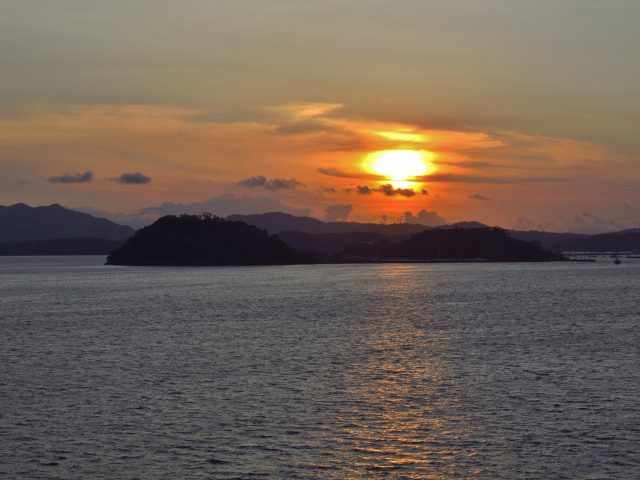
Over a hundred years ago, laborers rectified an inconvenience imposed by geology some millions of years before by digging the Panama Canal. The less-than-one-hundred-kilometer-wide Isthmus of Panama was all that blocked the way of ships wishing to travel between the Atlantic and Pacific Oceans without an outrageous detour.
The waters of those oceans could lodge the same complaint about the inconvenience. Before the Isthmus of Panama was there, currents would have connected the two oceans near the equator, producing a profoundly different pattern of ocean circulation from what we see today. The thin land bridge, on the other hand, connected the long-separated organisms of North and South America, releasing terror birds into North America and horses into South America, for example.
So when did this land bridge happen? That’s not an easy question to answer. Our best guess was that it occurred 3 to 4 million years ago, coinciding with fossil evidence of species migrations, changes in the salinity of the Caribbean Sea, and a transition from the warm Pliocene climate toward a Pleistocene defined by ice sheets.
To investigate, a team led by University of Los Andes’ Camilo Montes relied on sedimentary rocks to provide scraps of past landscapes. The trick, in this case, was to get the sediment to reveal where it came from.
The researchers sampled rocks near the juncture of Panama and Colombia, picking out minuscule grains of the mineral zircon. Zircons come from igneous rocks but are incredibly tough—surviving weathering and erosion that pulverizes many a weaker mineral. They are also the best geologic clocks around, sealing in radioactive uranium and the lead it decays into. If you know the ages of the surrounding igneous rocks the zircons could possibly have come from, dating the remnant zircons in a sedimentary rock can point to a source.
That had the potential to be relevant to our question, because the igneous rocks of the Northern Andes in Colombia are much older than those in Panama. Zircons in the Colombian rocks are at least 65 million years old, and some are older than 550 million years. In Panama, on the other hand, the igneous rocks formed as a result of volcanic activity between 40 and 70 million years ago, with an even more recent pulse between 10 and 20 million years ago.
The age of the Colombian sedimentary rocks the researchers sampled, from drilled cores and surface outcrops, is known from studies of the tiny foraminifera and pollen grains within them, as well as the typical geological methods of relative dating—deducing the sequence of events from spatial relationships.
In the older sedimentary rocks, representing the period from roughly 30 million years ago to 20 million years ago, the zircons all came back with old, Andes-like ages. All but two of over a thousand zircons were older than 65 million years old, and the oldest were over 3 billion years old.
But in the younger sedimentary rocks from the mid-Miocene—about 13 to 15 million years ago—there were also much younger zircons. One hundred of the six hundred zircons were less than 65 million years old, with the youngest just 13 million years old. In other words, Panamanian zircons were in these Colombian rocks, and they hadn’t been before.
Since those sediments were deposited in rivers (as well as just off-shore), this tells us the two areas had to be connected. As Panama “docked” with Colombia, rivers were able to carry sediment from Panama into Colombia, and along-shore currents dragged it up the Colombian coast. This was happening around 14 million years ago—ten million years earlier than many estimates.
That doesn’t mean it would have looked just as it does today. The line of volcanoes that made up Panama may have had some gaps farther up the isthmus that allowed shallow water to cross.
Other studies have seen signs that the flow of deeper ocean water into the Caribbean was restricted 10 or 11 million years ago, which would seem to fit with this timeline. However, that would mean another explanation would be required for the Caribbean salinity change and species migrations that occurred only 3 or 4 million years ago. It’s possible, the researchers say, that changes in climate could have been responsible. And suggestions that the docking of Panama might have flipped the switch on that climate transition obviously can’t hold water if Panama was holding back water long before the docking occurred. That’s part of what makes the details of Panama’s history so interesting—Panama has been implicated in a number of other events that are pretty interesting themselves.